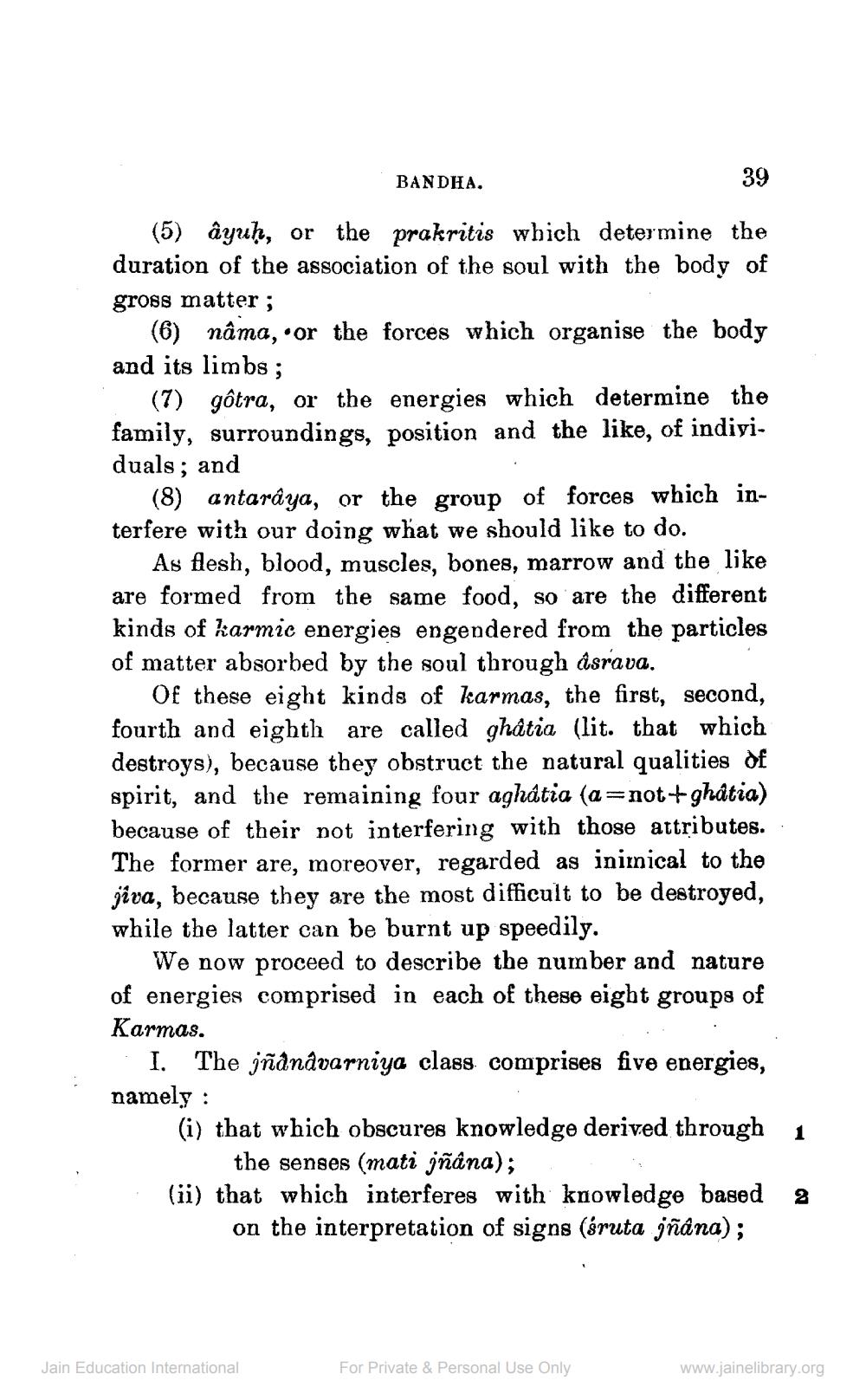________________
BANDHA.
39
(5) ayuḥ, or the prakritis which determine the duration of the association of the soul with the body of gross matter ;
(6) nâma, .or the forces which organise the body and its limbs ;
(7) gôtra, or the energies which determine the family, surroundings, position and the like, of individuals; and
(8) antaraya, or the group of forces which interfere with our doing what we should like to do.
As flesh, blood, muscles, bones, marrow and the like are formed from the same food, so are the different kinds of karmic energies engendered from the particles of matter absorbed by the soul through ásrava.
Of these eight kinds of karmas, the first, second, fourth and eighth are called ghatia (lit. that which destroys), because they obstruct the natural qualities of spirit, and the remaining four aghátia (a=not+ghatia) because of their not interfering with those attributes. The former are, moreover, regarded as inimical to the jiva, because they are the most difficult to be destroyed, while the latter can be burnt up speedily.
We now proceed to describe the number and nature of energies comprised in each of these eight groups of Karmas.
. I. The jñanavarniya class comprises five energies, namely : (i) that which obscures knowledge derived through
the senses (mati jñâna); (ii) that which interferes with knowledge based
on the interpretation of signs (sruta jñana);
1
2
Jain Education International
For Private & Personal Use Only
www.jainelibrary.org




